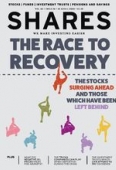Archived article
Please note that tax, investment, pension and ISA rules can change and the information and any views contained in this article may now be inaccurate.
Can the UK's banks weather the coronavirus storm?

Since the start of the year, the banks have been one of the worst performing sectors in the FTSE 350 index, losing over 40% along with oil services and travel and leisure. It’s been a similar story in Europe and the US, which suggests that investors across the globe are concerned about banks’ profitability and maybe even their resilience during this crisis.
As a result of the sell-off, the market values of most UK banks are close to levels last seen during the financial crisis of 2008, yet the banks are much better-managed than they were and they have much higher levels of capital. Also, this is a ‘second-order’ crisis in as much as it originated outside the banking sector.
Even so, the latest forecast from the Office of Budget Responsibility (OBR) of the shock to the UK economy this year – a 13% contraction, the worst outcome in over 100 years – far exceeds the estimates used in the stress test scenarios for the banks carried out by the Bank of England just last year.
Moreover, many investors question the OBR’s assumption that the UK will stage a Lazarus-like, V-shaped recovery in 2021, with suggestions that it might take years before the economy gets back to ‘normal’.
The government was clearly worried enough about the banks’ ability to keep lending that it had the Financial Conduct Authority tell them to stop all dividend payments and hold onto their cash.
CAN WE LEARN ANYTHING FROM THE US BANKS?
Fortunately, we have some idea of what lies in store as the biggest US banks have just reported their first quarter earnings.
On top of the usual squeeze on net interest margins due to lower base rates, which some banks offset by lending more money last quarter, there were two new areas of concern for US banks.
The first was credit card debt, which has ballooned in the last decade. As one observer put it, US shoppers gave their credit cards ‘a real work-out’ at the end of 2019 with spending in December topping $12.5bn, the highest figure in more than two decades.
Total consumer borrowing excluding mortgages and home equity loans rose by $22bn in December, also the biggest monthly amount in more than two decades, and now stands at a record $1tn.
The problem lies in the fact that credit card borrowing is unsecured, so if consumers decide not to pay the banks have to chase them through the courts. Also, there is a direct link between unemployment and credit card non-payment, and with more than 22m Americans registering as unemployed in the last month delinquencies could soar.
The second problem area was lending to the energy industry, which includes US shale producers who are making losses with crude prices at $20 a barrel and have already been through several rounds of bankruptcies. The problem is, even with gasoline at just 12 cents a gallon in some states, the lockdown and a lack of consumer demand means oil producers aren’t making any money.
Provisions for bad loans were sharply higher than in previous quarters, with Citigroup for example increasing its allowance for credit losses by 70% to $20.8bn or 2.9% of total loans from $12.3bn or 1.8% of loans a year earlier. Included in that figure was a $4.9bn charge for potential credit card losses.
Rival Bank of America increased its allowance for credit losses by 67% to $15.8bn after doubling its provisions for defaults in its consumer banking division.
Overall, however, provisions were less than some analysts had expected, and it looks as though the US banks aim to spread their impairment charges evenly through the year rather than front-load them.
TROUBLE AHEAD
According to Niklas Klammer, UK banking analyst at Morningstar, loan loss provisions will be ‘the biggest driver of profit and loss for the sector this year.’
His main areas of concern are loans to small and medium businesses which might fail due to the government lockdown, homeowners defaulting on mortgages if they become unemployed, and credit card losses.
Royal Bank of Scotland (RBS), which reports first-quarter results on 1 May, has the largest exposure to UK corporate borrowers and is likely to be the most affected by the steep decline in economic activity.
Lloyds (LLOY), which reports on 30 April, is the UK’s biggest mortgage lender and has a sizeable credit card business, MBNA, with £9bn of customer borrowing.
Barclays (BARC), which reports the day before Lloyds, also has a significant UK credit card business while half of the revenues from its international division come from the US where it has $27bn of exposure to credit card borrowing.
A NEW ERA FOR IMPAIRMENTS
Klammer also points out that the UK and European banks are in a ‘new era’ as regards provisioning for bad loans thanks to the introduction of a new reporting standard called IFRS 9.
Under the old standard, impairments were based on an ‘incurred loss’ model with the banks putting aside provisions once a loss event occurred. Under the new standard, from the time each new loan is made the banks have to provision for a potential increase in their credit risk.
In other words, provisions are based on expected credit losses with the banks having to make complex forward-looking economic forecasts and assess various scenarios to estimate their expected credit losses.
Given the complete lack of certainty over the economy, this could result in an enormous jump in provisions as the banks try to get ahead of a rise in bad loans.
‘In my view the banks should ‘kitchen-sink’ their provisions in the first quarter’, says Klammer. ‘You have to bear in mind provisions are a non-cash item and they can be written back if the loans don’t go bad.’
NOT ALL DOOM AND GLOOM
On the plus side, the government hopes that funding from its £330bn Covid Finance Facility will serve as a bridging loan to companies to see them through the shutdown without having to lay off workers or take on expensive bank debt.
The facility offers funds at zero cost to firms which may not meet the banks’ loan criteria, which means the banks can focus on lending to more credit-worthy borrowers with a lower risk of default.
It’s even feasible that, assuming impairments don’t reach levels which might threaten their capital base, the banks could come out the other side of the current crisis in a strong position as demand for credit spikes and the economy sputters back to life.
Important information:
These articles are provided by Shares magazine which is published by AJ Bell Media, a part of AJ Bell. Shares is not written by AJ Bell.
Shares is provided for your general information and use and is not a personal recommendation to invest. It is not intended to be relied upon by you in making or not making any investment decisions. The investments referred to in these articles will not be suitable for all investors. If in doubt please seek appropriate independent financial advice.
Investors acting on the information in these articles do so at their own risk and AJ Bell Media and its staff do not accept liability for losses suffered by investors as a result of their investment decisions.

 magazine
magazine









